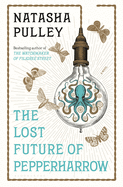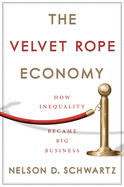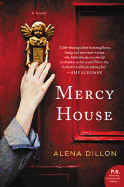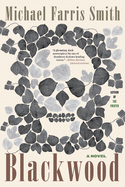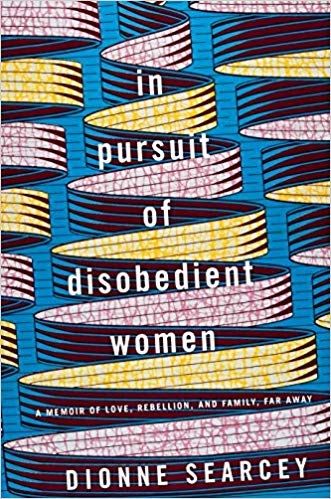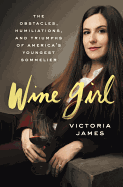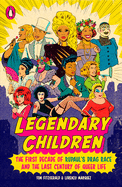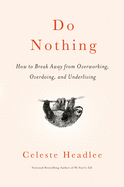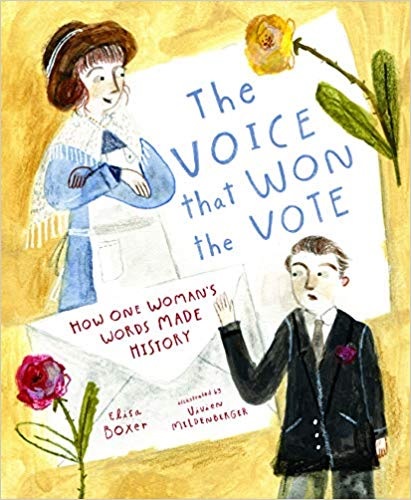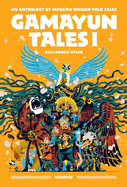Friday, March 27, 2020
Now more than ever, I enjoy cooking: hearty soups, crumbly scones, buttery scrambled eggs (with endless cups of tea). Last July, though, I moved into a studio apartment during an unusually hot Boston summer. After weeks of takeout, stovetop huevos rancheros and ready meals from Trader Joe's, I needed some new kitchen inspiration.
 Enter Cooking Solo (Houghton Mifflin, $19.99), Klancy Miller's brilliant, colorful cookbook about not only feeding yourself, but enjoying it. I've made her risotto, her lemon pancakes, her spicy coconut-sweet potato soup... the list goes on. But more than her recipes, I love Miller's approach: she insists, as a longtime single person, that investing the time and effort to feed oneself well is worth it. As a recent divorcée, I need that reminder on the regular.
Enter Cooking Solo (Houghton Mifflin, $19.99), Klancy Miller's brilliant, colorful cookbook about not only feeding yourself, but enjoying it. I've made her risotto, her lemon pancakes, her spicy coconut-sweet potato soup... the list goes on. But more than her recipes, I love Miller's approach: she insists, as a longtime single person, that investing the time and effort to feed oneself well is worth it. As a recent divorcée, I need that reminder on the regular.

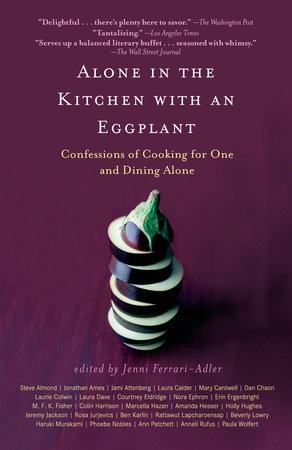 For a broader perspective on solo cooking, I turn to Alone in the Kitchen with an Eggplant, an eclectic essay collection edited by Jenni Ferrari-Adler (Riverhead, $15). Inspired by Laurie Colwin's eponymous essay (which kicks off the anthology), these pieces, some with recipes, recount the delightful, the depressing and the quirkily indulgent aspects of setting a solo table. Many of the contributors recall solitary meals (or seasons) with deep fondness, even nostalgia. Cooking for one can feel like a depressing prospect, but these books help remind me that there's a wealth of flavor, adventure and--yes--true sustenance to be found at a table for one. --Katie Noah Gibson, blogger at Cakes, Tea and Dreams
For a broader perspective on solo cooking, I turn to Alone in the Kitchen with an Eggplant, an eclectic essay collection edited by Jenni Ferrari-Adler (Riverhead, $15). Inspired by Laurie Colwin's eponymous essay (which kicks off the anthology), these pieces, some with recipes, recount the delightful, the depressing and the quirkily indulgent aspects of setting a solo table. Many of the contributors recall solitary meals (or seasons) with deep fondness, even nostalgia. Cooking for one can feel like a depressing prospect, but these books help remind me that there's a wealth of flavor, adventure and--yes--true sustenance to be found at a table for one. --Katie Noah Gibson, blogger at Cakes, Tea and Dreams
This Town Sleeps
by Dennis E. Staples
In a debut that intertwines the spiritual and the cynical until both are left choking for air, Dennis E. Staples demonstrates a green but thrilling emerging talent. This Town Sleeps follows several residents of a northern Minnesota Ojibwe reservation, where tragedy has scarred the quiet town of Geshig. At 17 years old, basketball hero Kayden Kelliher is murdered, leaving behind an intricate net of characters grappling with the aftershocks of his loss years later. Among them is protagonist Marion Lafournier, a young gay Ojibwe man, who accidentally awakens Kayden's spirit in the form of a dog, known as a manidoo or revenant. Marion, skeptical of Indigenous faith and feeling stuck between his life in Geshig and what might await him elsewhere, begins to piece together the curse following his family--and its ramifications on his sense of self.
Although This Town Sleeps doesn't pack the full emotional punch it intends, Staples's tale of love, loss, anger, memory and identity is rendered in such keen prose that the setting seems sharp and alive--not, in fact, asleep. Of particular interest is Marion's secret romance with a closeted white man, who struggles to reconcile his attraction to Marion with his upbringing ("You're a north woods man, you don't do sh** with guys," this lover tells himself). The relationship never pays off in the way readers might wish, but perhaps that is Staples's point, and the subtlety with which he makes it is powerful enough to warrant a closer read. This is an imaginative, ambitious novel, a resounding argument that Staples is a writer to watch. --Lauren Puckett, freelance writer
Discover: A young gay man on an Ojibwe reservation in northern Minnesota awakens a tragic spirit in this elegiac exploration of family, community and identity.
Mercy House
by Alena Dillon
For decades, the intrepid Sister Evelyn has done anything necessary to protect the women who seek shelter at Mercy House in Brooklyn, N.Y., whether that means facing down gang leaders or defying Catholic doctrine by supporting women who choose to divorce their abusive husbands. Now, in 2010, Bishop Robert Hawkins is coming to inspect Mercy House as part of an investigation of nuns across the United States, rooting out orders that are too secular or too feminist. Evelyn and the other nuns will have to keep Mercy House's deepest secrets from the bishop in order to continue their service to the abused and abandoned. But Evelyn has dark secrets in her own past that she will no longer be able to hide in the face of his arrival.
This debut novel from Alena Dillon does not shy away from the abuse suffered by the residents of Mercy House or the abuse that many have suffered at the hands of members of the clergy. Yet in spite of these harsh realities, it is a heartwarming book. As each of the young women who have sought refuge at the shelter share their stories in turn, and as flashbacks gradually reveal Sister Evelyn's history and relationships with her fellow nuns, readers develop a strong sense of the bonds of found family that have formed there. They stand by each other and the shelter that Sister Evelyn helped to build no matter what, and readers will cheer them on until the end. --Kristen Allen-Vogel, information services librarian at Dayton Metro Library
Discover: This moving debut about nuns fighting to protect their women's shelter from a doctrinaire bishop conveys the painful trials they face while remaining steadfast in their love for each other.
Blackwood
by Michael Farris Smith
Michael Farris Smith creates an atmosphere of hypnotic claustrophobia in the masterfully haunting Blackwood. Set up by a traumatic 1956 event, the novel immediately jumps ahead 19 years to a broken-down Cadillac in Mississippi hill country. In 1975, Red Bluff is overrun by empty storefronts and land "long since conquered by the timeless vines" that creepily engulf everything in their path, running up to the very edge of the blacktop.
The vehicle's occupants--man, woman and boy--are confronted by Sheriff Myer after a run-in at the drugstore. The Caddy is gone the next morning, but the trio slinks through the kudzu and roams the town like revenants, pushed to the brink by circumstances, escalating resentments and emotional burdens. Meanwhile, industrial sculptor Colburn Evans is brought to town by an advertisement for free artist workspace, but mostly the call of his tragic past. He's drawn to bar owner Celia, unaware of both the married man who covets her and the 1956 link between her mother and Colburn's father.
Smith (River; Desperation Road; The Fighter) perpetually sets his characters on insecure terrain, and Blackwood may present the most treacherous and suffocating yet. Madness descends, jealousies flare and old regrets surface, leaving no one untouched. The ghostly presence of the dementedly patient kudzu and an old slave-built tunnel system create a gothic horror bent, amplified superbly by Smith's prose. The writing is stunning and steady, but short chapters create an almost frantic apprehension as Colburn's noble search for himself is marred by wickedness, past and present. --Lauren O'Brien of Malcolm Avenue Review
Discover: A directionless man trying to come to terms with his past confronts more than he bargained for when he returns to the town of his tragic childhood.
Science Fiction & Fantasy
The Lost Future of Pepperharrow
by Natasha Pulley
In this engrossing follow-up to The Watchmaker of Filigree Street, British novelist Natasha Pulley returns to the 1880s, trading Victorian Britain for a steampunk-influenced Japan, where her heroes encounter a ghostly mystery while shaping international events.
Synesthetic translator and pianist Thaniel initially balks when the British Foreign Office assigns him to Tokyo. The job takes on greater appeal when his lover, Mori, a watchmaker and samurai who can remember potential futures, offers to join him, as he's been summoned home by Kuroda, his long-time frenemy and Japan's new prime minister. However, when they arrive at Mori's beautiful estate with their adopted daughter, Six, in tow, Thaniel is astonished to meet Takiko Pepperharrow, the wife Mori never mentioned. While Thaniel grapples with doubts about their relationship, Mori plays a dangerous game of chess involving Japan, Russia and Britain, trying to bring about a future timeline even he can't exactly remember. When Mori goes missing, Thaniel is left to solve the mystery of his disappearance and the ghostly apparitions that manifest during a massive electrical storm.
Complicated relationships and international intrigue buoy the plot while Pulley's steampunk aesthetic lends a touch of clockwork fantasy to this complex sequel. While familiarity with the previous book will help readers find their footing more quickly, newcomers can enjoy this installment as a standalone. Rich descriptions of Japan and intriguing character development shine in this intricately wrought fantasy of history making. --Jaclyn Fulwood, blogger at Infinite Reads
Discover: Clairvoyant watchmaker and samurai Mori gambles on manipulating the future while his British lover, Thaniel, investigates ghostly apparitions in 19th-century Japan.
Biography & Memoir
In Pursuit of Disobedient Women: A Memoir of Love, Rebellion, and Family, Far Away
by Dionne Searcey
When reporter Dionne Searcey's husband suggests a move to the suburbs, she turns to her employer for an alternative plan, and the New York Times doesn't fail her. She's offered the position of West Africa bureau chief, and the paper's publisher, Arthur Sulzberger, gives her some cryptic parting words: "If you come to a bridge too far... don't take it."
Soon Searcey, her husband and their three children are in Dakar, where her absorbing memoir, In Pursuit of Disobedient Women, picks up speed and depth. With her family ensconced in a security-guarded house and her children enrolled in a walled-off international school, Searcey is immediately plunged into the story of the Nigerian extremists Boko Haram and their infamous kidnapping of more than 250 schoolgirls in 2014. Two years later, the girls are still held prisoner in an unknown spot while remaining in the forefront of the world's attention.
Unable to find these captives, Searcey unearths the stories of the girls who escaped Boko Haram, who watched their families die and managed to avoid becoming suicide bombers. While she struggles to bring these accounts into print, she realizes her marriage is imperiled and wonders if perhaps she may have reached that "bridge too far."
With the clear and detailed narrative voice of a skilled journalist, Searcey tells how she balanced a life of dangerous assignments with the hazards of domestic turmoil, casting a bright spotlight upon countries her readers may seldom think about along with trouble spots that many women will recognize. --Janet Brown, author and former bookseller
Discover: In this compelling memoir, a foreign correspondent specializing in war zones strives to maintain domestic tranquility at home.
Wine Girl: The Obstacles, Humiliations, and Triumphs of America's Youngest Sommelier
by Victoria James
Victoria James (Drink Pink: A Celebration of Rosé) retraces the rocky road she traveled to become an award-winning wine expert who, at the age of 21, was the youngest sommelier to lead a Michelin-starred restaurant.
She divides her story into seven sections, mapping her life from age seven to 28. The prologue perfectly embodies the theme and tone of the memoir: James, a newbie sommelier at an upscale restaurant, must deliver a $650 bottle of chardonnay from Burgundy, France, to an elite, grossly chauvinistic customer. James quells her nervousness and uncorks the bottle, following protocol with "calculated precision." She tastes and approves the wine, which she describes as "like slipping into a bed made up with silk sheets." After the patron takes his own sip, he verbally demeans James--her youth and inexperience--and orders her to take the bottle back and uncork another. What ensues is an apt metaphor for James's life as she takes on the patron and her own fears, managing to appease the customer and her bosses, while also endearing herself to readers who will eagerly empathize with and root for her.
How she deals with challenges and conflicts--and proves to be a tenacious problem-solver, undaunted overcomer and go-getter--are what make James and her underdog story so appealing. Her flowing narrative defines and explains many terms used to describe wine and its aficionados. One word, however, sums up James's utterly engrossing coming-of-age and success story--Wonderful! --Kathleen Gerard, blogger at Reading Between the Lines
Discover: The captivating story of a resourceful young female sommelier who overcame countless obstacles to become an award-winning wine expert and restaurateur.
Business & Economics
The Velvet Rope Economy: How Inequality Became Big Business
by Nelson D. Schwartz
New York Times business reporter Nelson D. Schwartz's deceptively breezy The Velvet Rope Economy offers an all-inclusive VIP survey of one ever-widening American gulf: the divide between the first-class, fast-pass, pay-for-comfort experiences of a wealthy elite, and the slow, soiling reality shared by us suckers in steerage.
Schwartz guides readers into the worlds of high-end cruise packages, exclusive airport terminals, luxury ballpark suites and line-jumping amusement park tickets, illuminating the history, challenges and economic logic of the booming business of catering to those eager to pay a premium price for a friction-free life. Schwartz favors vivid anecdotes and thumbnail accounts of entrepreneurs' lightbulb moments--he captures the a-ha! that led to solo drivers paying to cruise in carpool lanes. But The Velvet Rope Economy grows more outraged as the pages pass, arguing that the highest cost of all comes when a society's ballin' class utterly removes itself from the conditions shared by the general population--or investment in a common good. In his study's second half, Schwartz ducks under his velvet rope to consider the rise of Dollar General and Dollar Tree, both the perfect opposite of Diamond Medallion Status, and the crumbling of institutions like hospitals, public schools and fire departments. (He also introduces well-heeled homeowners who enjoy access to private firefighting teams, of course.)
Despite the bleakness of income inequality, Schwartz is persuasive when he offers up hopeful contrasts, such as some inspired nonprofits or the success of egalitarian businesses like Southwest Airlines, whose recent troubles don't detract from his thesis. --Alan Scherstuhl, freelance writer and editor
Discover: A New York Times business reporter makes the case that VIP status corrodes the common good.
Social Science
Legendary Children: The First Decade of RuPaul's Drag Race and the Last Century of Queer Life
by Tom Fitzgerald and Lorenzo Marquez
Fitzgerald and Marquez (who blog, podcast and write as "Tom & Lorenzo") have come up with a clever way to teach a new generation about a century's worth of LGBTQ pop culture and history. They examine the enormously popular TV series RuPaul's Drag Race and reveal how each element of the show is a tribute to a historical figure or event in queer history. "RuPaul and company devised a show that serves as an actual museum of queer culture and social history," write Tom & Lorenzo.
The mechanics of creating a drag persona and look in the Werk Room leads to profiles of non-gender-conforming activists Marsha P. Johnson, Sylvia Rivera and Stormé DeLarverie and the use of Polari (a British slang used in gay subculture). The Library mini-challenge on Drag Race, where contestants demonstrate their quick tongues and thick skin by stinging each other with shady insults, leads to a discussion on how marginalized and disenfranchised people decades ago often had only their sharp tongues to defend themselves. The scantily clad Pit Crew ("one of the more subversive aspects of Drag Race," write the authors, "putting unapologetic gay male sexual archetypes in front of the so-called mainstream") sparks discussion of old physique magazines and artists who glorified the male body, like Bob Mizer and Robert Mapplethorpe.
Legendary Children, a lively, fascinating, comprehensive and essential LGBTQ history lesson, will reach and educate a new generation. By showing how every aspect of RuPaul's Drag Race can be traced to longstanding queer traditions and pioneers, Tom & Lorenzo have revitalized history. --Kevin Howell, independent reviewer and marketing consultant
Discover: A century's worth of LGBTQ pop culture and life comes alive and reveals how every aspect of RuPaul's Drag Race pays tribute to that past.
Essays & Criticism
Thin Places: Essays from in Between
by Jordan Kisner
In her debut collection, essayist Jordan Kisner holds up a light to American culture in a way that is curious, searching, at times wry, but also deeply illuminating.
Thin Places: Essays from in Between lives up to its title as Kisner deftly navigates the liminal spaces between cultural traditions, history and identity. The 13 essays in the book are wide-ranging in subject matter yet always grounded in the personal. Kisner expertly stitches her personal history into larger explorations of religion and science. If some of the essays in the collection feel slight, such as "The Big Empty" or "Good Karma," it's because Kisner has raised the bar so high in other places.
Several essays stand out as stellar examples of Kisner's slowly penetrating style. The titular essay, "Thin Places," follows an experimental procedure for OCD patients before delving into Kisner's own struggles with the disorder and uncanny experiences she has had. "Habitus," perhaps her most personal essay, focuses on a long-running social pageant on the U.S.-Mexico border, which Kisner uses to frame her own Mexican ancestry and white standards of beauty and personal worth. That she can navigate tricky issues of identity speaks to her incredible skill as an essayist. The same skill is on display in one of the book's best, "Stitching," which focuses on the anti-Trump activist group called Mormon Women for Ethical Government. The piece becomes a powerful political statement on activism and idealism as Kisner discovers "a group of Americans who are not yet jaded about the limit of their power as citizens."
Thin Places bristles with intelligence. At its best, it's strikingly revelatory. Kisner has effectively announced her arrival to the pantheon of American nonfiction writers. --Scott Neuffer, writer, poet, editor of trampset
Discover: This collection of 13 essays explores the intersection of science, religion and politics with sharp insight and an affecting personal touch.
Psychology & Self-Help
Do Nothing: How to Break Away from Overworking, Overdoing, and Underliving
by Celeste Headlee
"Pushing harder isn't helping us anymore," writes journalist and speaker Celeste Headlee in the introduction to Do Nothing, an engaging text that implores readers to "stop treating [themselves] like machines" and instead, "celebrate [their] humanness at work and in idleness." Headlee provides readers a necessary lesson for the contemporary age on how the "cult of efficiency" predates modern technology. By doing so, she is able to demonstrate how better technology has merely sped up the pace of life, and how a constant push to save time and improve ourselves does not allow people to live fully.
Headlee reflects upon her own experiences, her brushes with exhaustion and burnout, in order to encourage readers to slow down voluntarily and spend time enjoying the things they like to do, versus or in addition to the work they have to do. Similarly, by exploring the historical construction of "work," she asks readers to reconsider how they might think about where work fits in their lives today, and how they structure their lives around it. She explains how the inverse relationship between hours of work and increased productivity has been recognized across history, from feudal serfdom through the industrial revolution. She also demonstrates the efficacy of unions at forcing employers to shorten hours and thereby increase productivity. This is not a self-help book, nor a how-to for people looking for a guide for different working habits. Rather, Headlee systematically deconstructs the toxicity of hustle culture with historical and scientific research to help readers question their habits and impulses surrounding overwork. --Michelle Anya Anjirbag, freelance reviewer
Discover: This helpful manifesto argues for the cultural and individual letting-go of devotion to work, so that people can find more fulfilling and productive lives.
Children's & Young Adult
We Are Water Protectors
by Carole Lindstrom, illus. by Michaela Goade
Flowing words by Carole Lindstrom and lush art by Michaela Goade appear in immaculate synchronicity on every page of We Are Water Protectors. A young girl, instructed by her wise Nokomis--grandmother--acts as the story's guide, creating a beckoning entry for even young children to become conscious of the plight of Mother Earth.
"Water is the first medicine," the girl repeats Nokomis's lesson. "It nourished us inside our mother's body. As it nourishes us here on Mother Earth." Despite humanity's irrefutable dependence on water, the man-made perils of the modern world are an expanding global threat. "My people talk of a black snake that will destroy the land," the girl cautions. What was thought to have been something far away is undeniably happening now: "the black snake is here" wreaking poisonous destruction. "TAKE COURAGE!" the girl demands, gathering her people--"We are water protectors," she claims. "WE STAND."
Like their brave protagonist, Lindstrom (Girls Dance, Boys Fiddle) and Goade (Encounter), too, are Indigenous water protectors: Lindstrom is Anishinaabe/Métis and tribally enrolled with the Turtle Mountain Band of Ojibwe; Goade identifies as Tlingit and is enrolled with the Central Council of the Tlingit and Haida Indian Tribes of Alaska. Both their ancestral identities are intimately woven into their affecting collaboration, with Ojibwe, Tlingit and Lakota words imbedded in the text and a glossary at book's end. Goade further incorporates Lindstrom's Ojibwe culture into her illustrations by including Anishinaabe/Ojibwe clan symbols and floral designs throughout. Every double-page spread is a richly hued, intricately detailed visual feast. Author and artist press for action with a thoughtful final-page pledge urging early awareness and inviting even the youngest readers--from all backgrounds--to be stewards of our shared planet. --Terry Hong, Smithsonian BookDragon
Discover: To combat growing threats against Mother Earth, Indigenous creators Carole Lindstrom and Michaela Goade inspire young readers to become the newest generation of water protectors.
The Voice that Won the Vote: How One Woman's Words Made History
by Elisa Boxer, illus. by Vivien Mildenberger
Journalist Elisa Boxer's quick and uplifting children's book debut tells a little-known tale from the annals of the women's suffrage movement.
"For nearly seventy-five years, [suffragists] had organized meetings... Marched in parades... Carried signs... And made speeches, demanding their right to vote." In 1920, Tennessee was the final state to vote for the proposed 19th Amendment to the U.S. Constitution; if lawmakers voted yes, it would be the 36th state to do so and the amendment would be ratified. If they voted no, women would have remained voiceless in United States politics. Because of a tie, Tennessee legislators had to vote twice. One man, Harry Burn, changed his vote from "no" to "yes," ultimately making the 19th Amendment law. The Voice that Won the Vote is the inspirational story of the force that changed Burn's vote: his mother. Febb Burn was college-educated in a time when most women didn't pursue degrees. She believed women should have the same rights as men in deciding the laws and lawmakers of the country. She told Harry so in a letter--the letter that changed his vote.
In her straightforward presentation, Boxer highlights the importance of doing what is right even if it isn't popular. Her friendly and upbeat text teaches readers about a mostly unknown hero, the story offering myriad starting points for discussion. Vivien Mildenberger (All in a Drop) illustrates in an uncomplicated style using an earth-toned palette, allowing her figures' facial expressions (scowls versus cheers) and body language (crossed arms, hugs) to take center stage, delivering emotions as powerful as the words they accompany. Writer and illustrator combine for a lovely commemoration of this historic event in U.S. history. --Jen Forbus, freelancer
Discover: In celebration of the 19th Amendment's centennial, a journalist relates the heartwarming story of a legislator who changed the face of U.S. democracy by listening to his mother.
Gamayun Tales I: An Anthology of Modern Russian Folktales
by Alexander Utkin
Alexander Utkin's Gamayun Tales series offers a striking combination of experimental artwork and action-packed storytelling inspired by the author's love of Slavic folklore. This volume compiles three previously published tales--The King of the Birds, The Water Spirit and Tyna of the Lake--into a single narrative concerning a merchant and his family whose lives are disrupted by a series of encounters with mythic beings. Gamayun, a half-bird, half-human purveyor of divine prophecy, acts as the tale's narrator.
Following a catastrophic war between the Bird and Animal Kingdoms, the King of Birds is wounded. He is rescued by an intrepid merchant, whose reward for his troubles is a magical golden chest that transforms into a lavish palace when opened. The merchant's joy is threatened, however, after he accidentally offends the jealous water spirit Vodyanov, who tricks the merchant into pledging his son's life to Vodyanov's service. With the help of Tyna, Vodyanov's magical "daughter," the merchant's son must escape Vodyanov's Kingdom without inviting the spirit's wrath.
Utkin's blocky figures and energetic brush strokes evoke the earthiness of a Russian woodcut and the playful experimentalism of 1950s Disney cartoons. His color palette glows with autumnal reds and golds, punctuated by bursts of aqua, lavender and cerulean. With its brash non-human characters and rolling eruptions of color, Utkin's wilderness is a force to be reckoned with--despite occasional heroics, his human characters remain wide-eyed interlopers, navigating the stormy seas of an ancient order they are barely allowed to glimpse. --Devon Ashby, Shelf Awareness
Discover: This vibrant graphic novel propels its characters through a series of supernatural adventures drawn from Slavic folklore.


